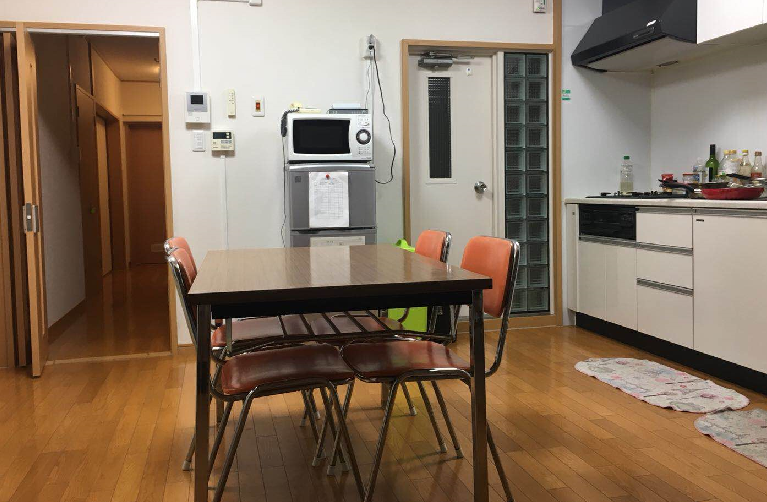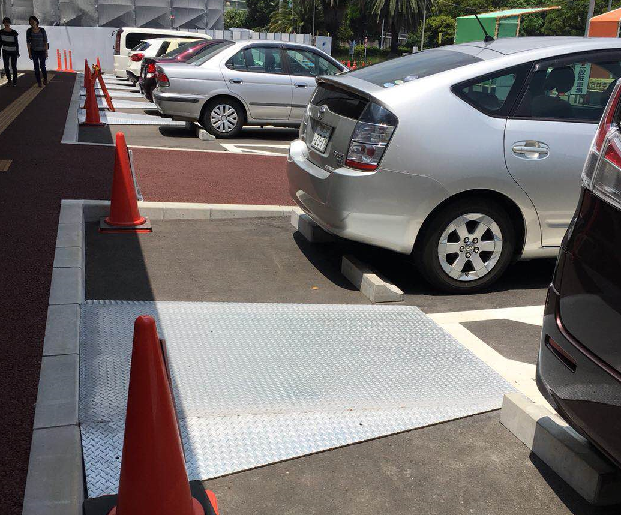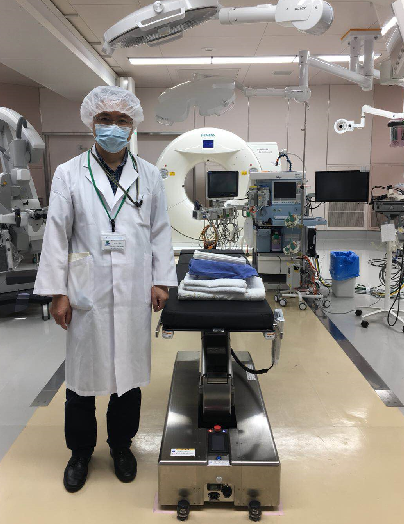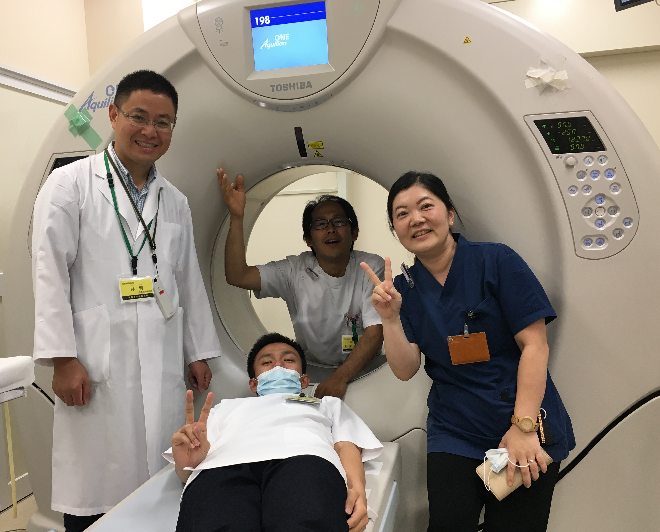A Pleasant Journey to Shizuoka Prefectural Hospital
2018/06/29A Pleasant Journey to Shizuoka Prefectural Hospital
Author: Lin Wei, Radiology Department
Translator: Shen Jiayin
Reviewer: Si Xiaocai
On June 20, 2018, departed from Hangzhou, the paradise on earth by the West Lake, landed in Shizuoka, the beautiful countryside under the Mount Fuji, I started my three weeks’ advanced training and exchanging trip at Radiology department of Shizuoka Prefectural Hospital.
A warm and considerate reception
Though it was raining heavily the day I set off, fortunately, my flight still departed on schedule. After around three hours’ flying, we safely arrived at Mt. Fuji Shizuoka Airport. In pouring rain, Mr. Tamai from International Collaboration Department drove to the airport ahead of schedule and waited to pick me up, which moved me deeply. After one hour’s drive, we finally reached the largest hospital in Shizuoka Prefecture, the one that I had long been yearning for.

P1. The gate of Shizuoka Prefectural Hospital
Mr. Tamai led me to living quarters, whose rooms have traditional Japanese Tatami, washing machine, refrigerator, air conditioner, kitchen, and other sanitary fittings. The room they prepared for foreign research students is neat and delicate, which made me feel at home.

P2. The comfortable dorm for foreign research students
Then another colleague Mr. Mochizuki showed me around the hospital and surrounding environment, and introduce various departments of the hospital. It is quite quiet, clean and neat. Doctors, nurses and patients are polite and gentle. Everything is well arranged in perfect order.

P3. The clean, spacious and bright Outpatient Hall
Next day, Mr. Tamai helped me get familiar with traffic system in Shizuoka, including the bus system, JR (Japan Railway), Shinkansen, and any other problems I may encounter with during the course of research. No matter how big or trivial the matter is, he made me fully clear about everything.
The dedicated radiologic technologists
The hospital stipulated that weekday working hours start at 8:30. However, technologists often come one hour earlier to start the machine room, record the temperature, humidity and make a series of preparations for the previous day’s quality control. No one leaves earlier than 5:15 pm, the set time to leave for home. They greet each other when they come, say goodbye to each other when they go, and never complain. The atmosphere is quite harmonious. In case of treating critical or inconvenient patients, the technologist on duty would automatically put on the lead clothing to help the patients get ready in the X-ray room or CT room.
The delicate care for the patients
In the waiting hall, the receptionists prepared soft sofas for the patients come as promised. They sit there quietly, waiting for the doctors’ call. I was surprised by the quietness and good order. There is not any loud noise here. Doctors, nurses, technologists always speak to the patients in a gentle way, with nod and bow, which made me feel warm from bottom of my heart. During the examination, they always use clean towels to cover the exposed parts of patients. For one thing, it is to protect the privacy of patients; for another it is to keep warm. The mattress, white towels, triangular mats, disinfectant napkins and other things needed in the examination are all available. In the parking lot, wheelchair access is also available. All these details show the hospital’s patients-oriented care.

P4. wheelchair access in parking lot
The standardized use of contrast medium
Nowadays, some hospitals use contrast medium in a simple, rough way. No matter what height or weight the patient has, the same dose of contrast medium is used. It will cause two kinds of consequences: unclear examination result or heavy burden on the patients’ kidneys by using excessive contrast medium. In normal range of kidney’s function, Shizuoka Prefectural Hospital use high pressure injector to automatically calculate the dose according to patient’s weight.
CT examination before and after operation
In order to make a clear and definite diagnosis and judge the stage of the disease, the preoperative patients have three stages of scanning. After operation, to follow up and track, two stages of scanning are enough. This can not only track the effect of follow-up treatment, but also reduce the effective radiation of X-ray.
Personalized examination
Since the patients’ weight, condition, radiologic technologist and clinician’s requests vary from person to person, parameters in the examination differ. The hospital strive to make sure that every patient get the best examination results according to their individual differences.
Emphasis on development of new projects and the use of new equipment
Whole spine MRI, diffusion tensor imaging and so on.

P5. The use of SIEMENS CT in the new operating room

P6.The kind communication between Director Machiko Tsuchiya, technologist Sawaguchi Fumiya (both from CT department) and Director Lin







